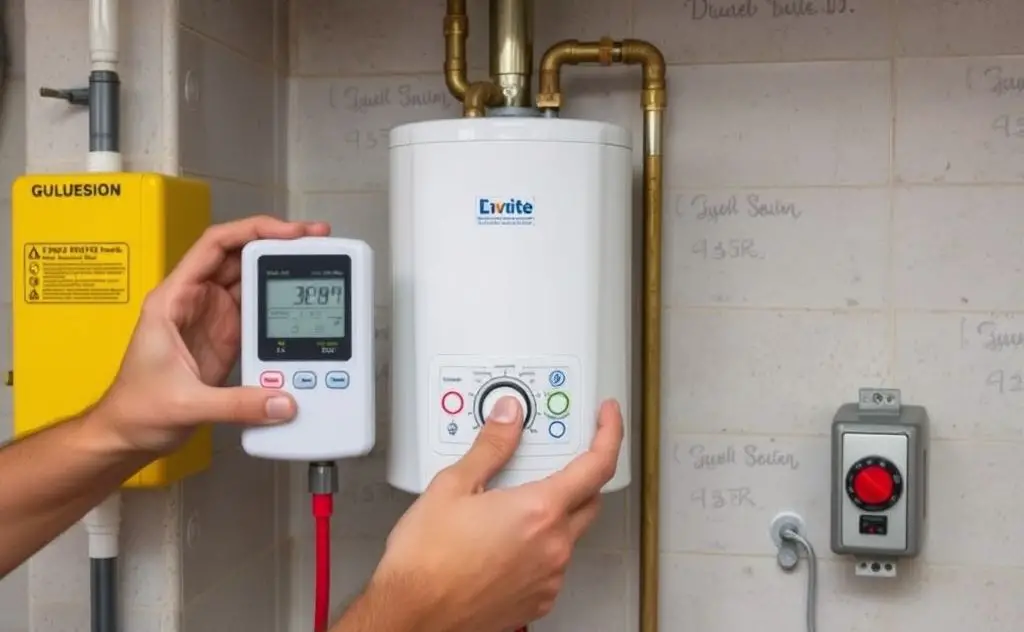To check if the water heater breaker is off, inspect the circuit breaker panel for the water heater’s switch; it should be in the ‘off’ position or not lit.
Knowing whether your water heater breaker is off can save you from cold showers and potential electrical hazards. This guide covers visual checks, testing methods, and safety precautions.

Visual Signs Your Water Heater Breaker Is Off
Start with these simple checks before touching any electrical components:
- Breaker position: The switch will be flipped to “OFF” or sit between ON/OFF if tripped
- Indicator lights: Most water heaters have power indicator lights that turn off
- No sounds: Electric heaters make no humming noise when powered off
- Cold water: No hot water after normal recovery time (1-2 hours)
How to Locate Your Water Heater Breaker
Find the correct breaker in your electrical panel:
- Look for a double-pole breaker (two switches tied together)
- Check labels – often marked “Water Heater” or “WH”
- Typical amperage: 30-50 amps for residential units

Testing Methods for Water Heater Power
Non-Contact Voltage Tester
The safest way to verify power status:
- Turn off breaker at main panel
- Remove water heater access panel
- Test wires near thermostat and elements
- No beep/lights = no power present
Multimeter Testing
For more advanced verification:
| Test Location | Expected Reading (Power Off) |
|---|---|
| Terminal screws | 0 volts AC |
| Element contacts | 0 volts AC |
Common Reasons for Water Heater Breakers Tripping
- Faulty heating element: Causes excessive current draw
- Sediment buildup: Makes elements overwork
- Short circuit: Damaged wiring or connections
- Overloaded circuit: Other appliances sharing the circuit
For persistent tripping issues, consider replacing heating elements or consulting an electrician.
Safety Precautions When Checking Breakers
- Always turn off main power before accessing electrical components
- Wear insulated gloves when testing live circuits
- Never assume a circuit is dead – always test first
- Keep area dry to prevent shock hazards
What Not to Do
Avoid these dangerous practices:
- Using metal tools near live terminals
- Bypassing safety switches or reset buttons
- Operating with visible damage or burnt smells
- Ignoring frequent breaker trips
Troubleshooting No Power to Water Heater
If your breaker is on but heater isn’t working:
- Check thermostat settings
- Test reset button (usually red) on upper thermostat
- Inspect wiring for loose connections
- Verify proper voltage at terminal block
For gas water heaters, check the pilot light and gas supply valve if experiencing no hot water despite having power.
When to Call a Professional
Contact a licensed electrician if you encounter:
- Burnt/melted wiring
- Breaker that won’t stay reset
- Visible arcing or sparks
- Unfamiliar electrical components
According to American Home Shield, electrical water heater issues account for 27% of all water heater service calls.
